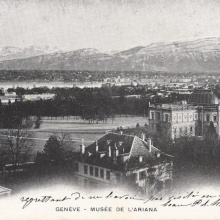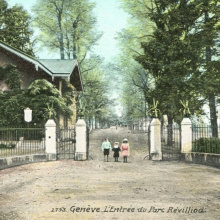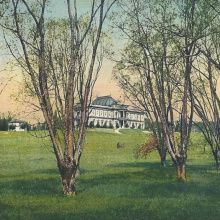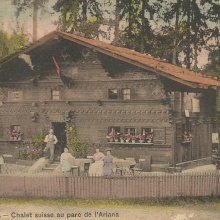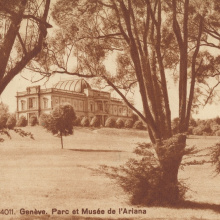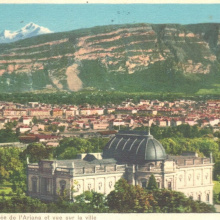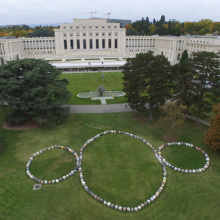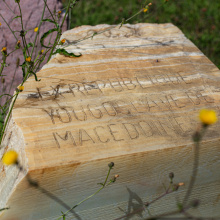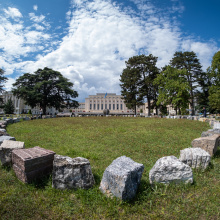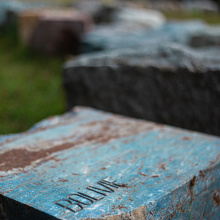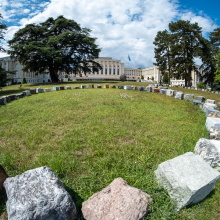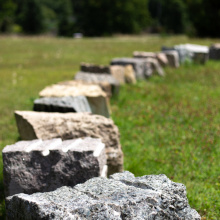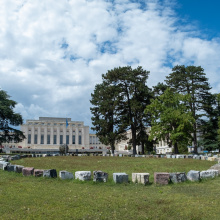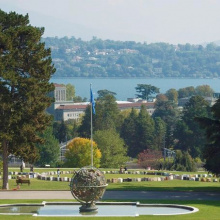
Breadcrumb
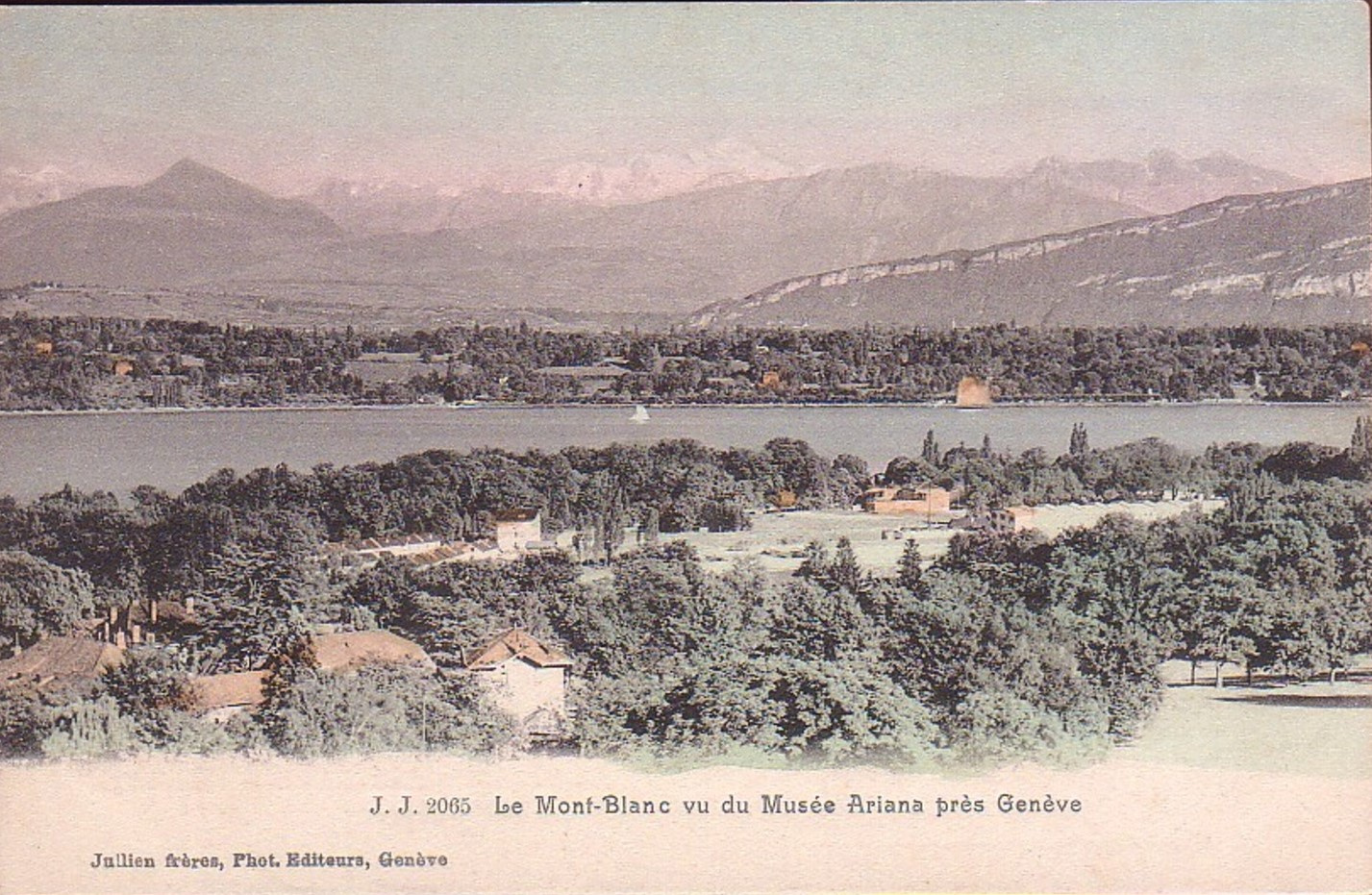
History
The Palais stands just behind the Ariana Museum, in the 46-hectare Ariana Park, one of the biggest and most prestigious parks in Geneva, with an outstanding view of Lake Geneva and the Mont Blanc beyond. The City of Geneva made the park available initially to the League of Nations, and then to the United Nations for its offices, for as long as the UN exists. The park was originally owned by the Revilliod de Rive family, whose last descendant, Gustave Revilliod, bequeathed it to the City of Geneva.
Villas
The grounds of the Palais des Nations house numerous formerly private residences and nineteenth century villas including La Fenêtre (1820), Le Bocage (1823) and La Pelouse (1853).
There are other historic buildings located around the property which were originally built or placed in the Ariana Park .
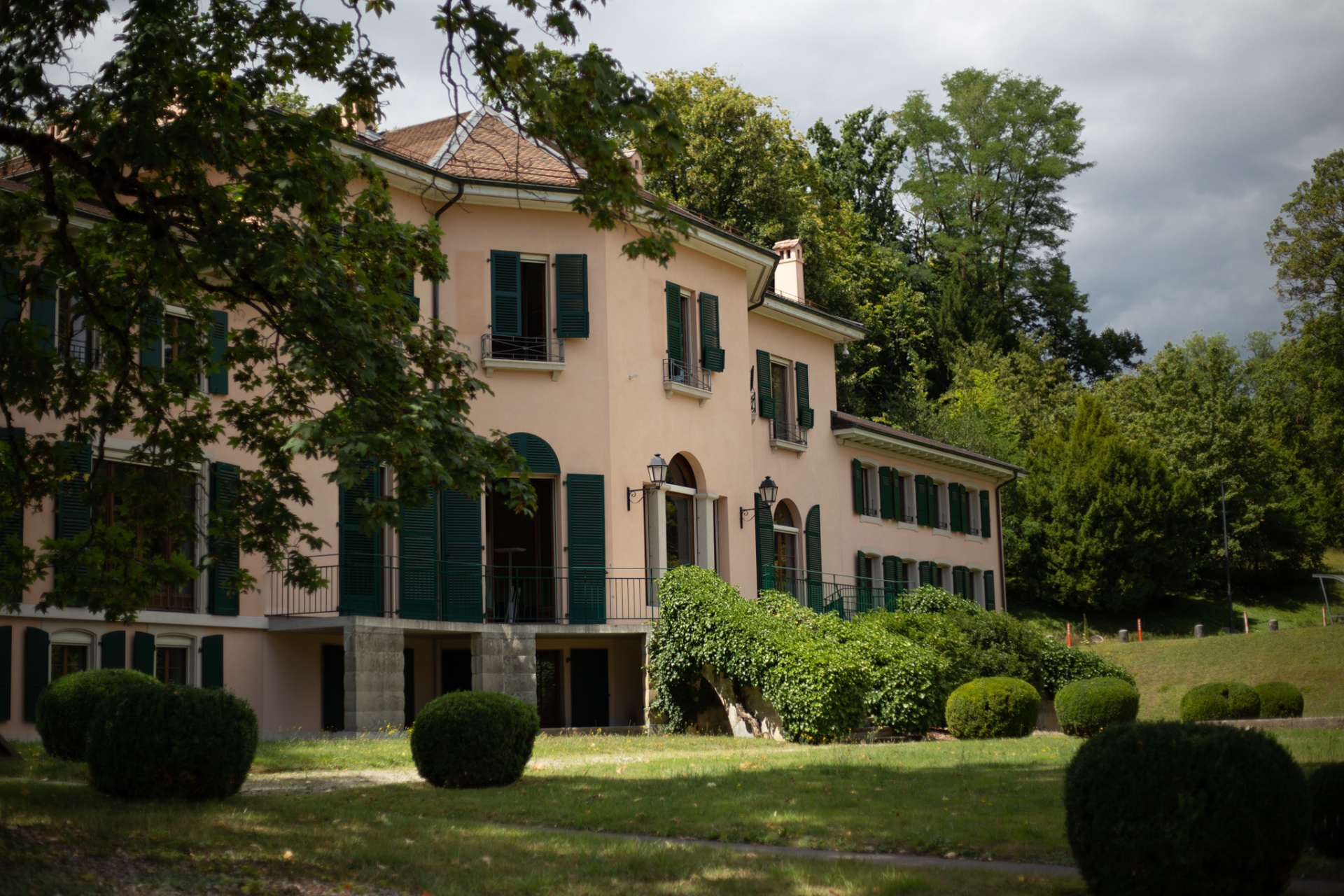
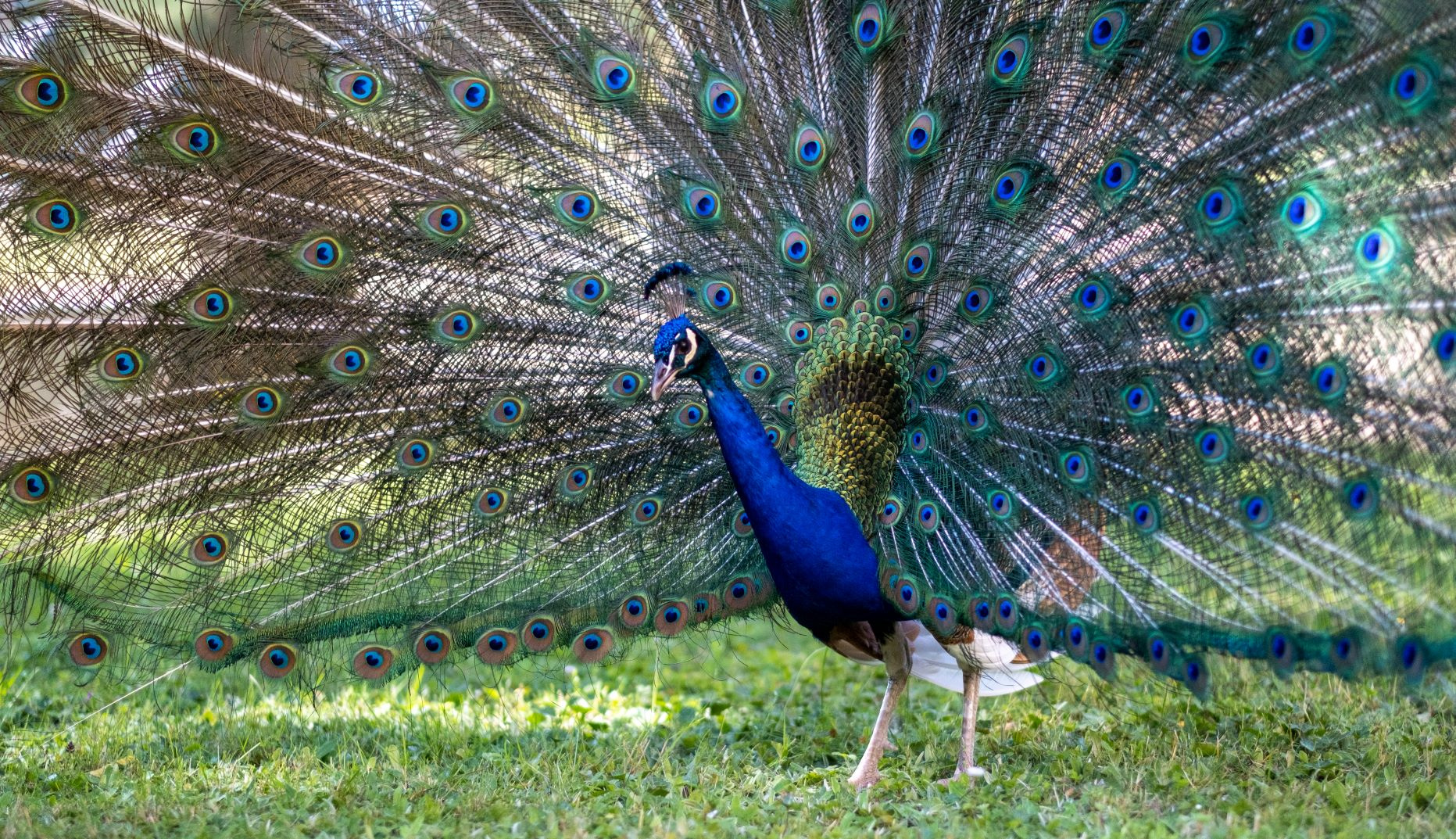
The Peacocks
It is not unusual to see peacocks roaming freely and dancing in full splendor in the Palais grounds. Most of the birds that visitors can see today are peafowl donated to UNOG in 1997 by a zoo in Japan. Others were a gift from the Permanent Mission of India. The birds are fed and cared for by the park’s gardeners.
Biodiversity in Ariana Park
Biodiversity at the Palais des Nations
Sheep in Ariana Park
The red fox
The grey heron
Parc Naturel
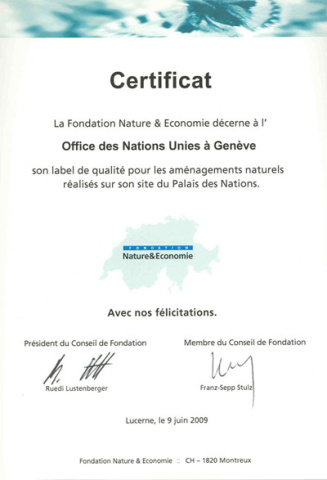
On 9 June 2009, the United Nations Office at Geneva (UNOG) was awarded the prestigious Nature Reserve Certificate by the Swiss non-profit organization Fondation Nature & Economie.
This well-known environmental quality label is awarded to entities that protect nature and contribute to biological diversity by managing at least 30 per cent of the green areas around buildings in a natural manner. UNOG’s many initiatives to qualify for the Certificate include, among others, avoiding pesticides, utilizing compost and making use of sheep instead of lawnmowers.
The award of the Certificate constitutes an acknowledgement of UNOG’s firm commitment to climate neutrality and enables the Office to show an important example in line with the Secretary-General’s priorities.
As a result of these concerted efforts over several years, visitors can enjoy the rich biodiversity of the 46-hectare park, with majestic trees over 100 years old. Over 800 species can be found in the park. Six hundred have been identified so far. Plaques indicating the country of origin, Latin and common names and species have been affixed to 120 of the trees in the areas of the park most frequented by visitors. A team of five gardeners maintains the park and its alleys and plants the flower beds.
The maintenance of Ariana Park in a natural manner will hopefully inspire and encourage staff members and all who come to visit the Park to apply the same principles in their activities and thereby provide further impetus for a greener United Nations in our collective efforts to combat climate change.
Monuments
The grounds of the Palais des Nations contain many important monuments that were gifts from Member States, private sponsors and artists.
The most well-known monuments include:
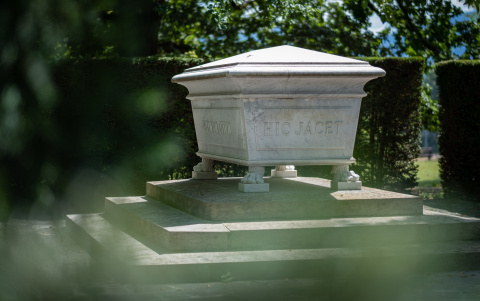
Gustave Revilliod, born in 1817, was the last descendant of an affluent French family that settled in Geneva in the sixteenth century. He spent much of his life travelling the world collecting art, which he housed in the Ariana Museum. He was the founder of the museum, and named it after his mother.
He passed away in Egypt in 1890. Having a special affection for Geneva, he requested that his final resting place be an unmarked grave in a grove of oak trees on his property, Ariana Park. In his will, he bequeathed the expansive park to the City of Geneva. Years later, the City allowed the League of Nations and then the United Nations to construct their offices on the land and be the caretakers of the park.
To this day, tucked away within a hedge of common yew at the foot of an oak tree, behind the UN Library Geneva, rests the sarcophagus of Gustave Revilliod.
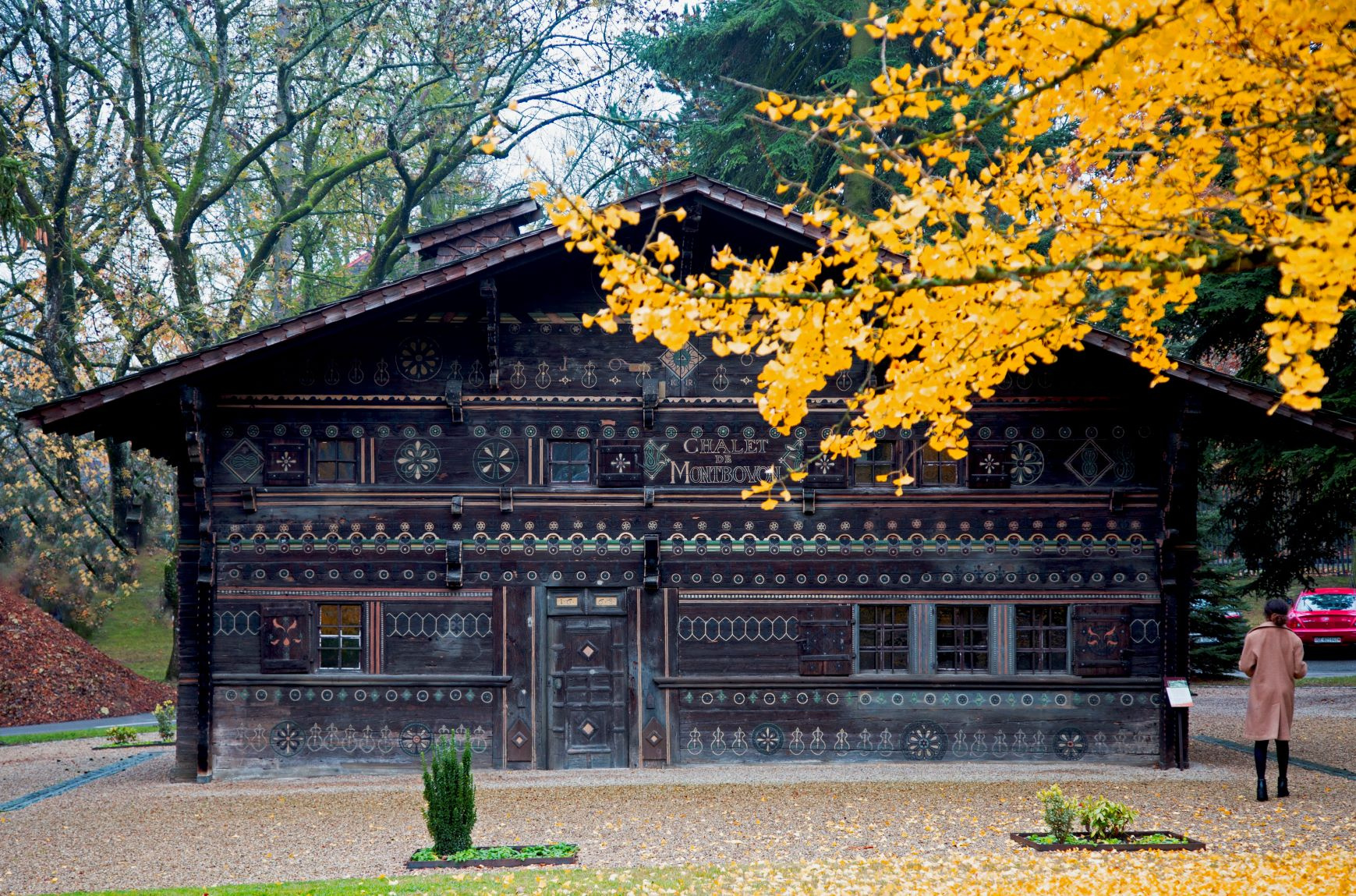
Somewhere high up in the mountains along the border between the cantons of Fribourg and Vaud, deep in the Gruyère Pays-d’Enhaut Regional Nature Park, a Swiss man once carved and painted flowery embellishments onto the wooden facade of his mountain home. The green, blue and yellow colours would have complemented the seasonal alpine flowers and natural grass growing around it. This was the humble beginnings for the 400-year-old chalet which is now a part of the UN Geneva campus, nestled in a discreet corner of Ariana Park.
The 17th century chalet was built in Montbovon in 1668 and transported to Geneva more than 200 years later for the 1896 Swiss National Exhibition. It was displayed as part of the reproduction of a typical Swiss village. When the exhibition ended, the Gustave Revilliod Foundation bought the chalet for a rumoured 50 Swiss Francs at auction and had it moved to the Ariana Park. The interior reveals inscriptions written in the 19th century Franco-Provençal dialect. Above windows and on the walls are words and symbols encouraging kindness and humility, possibly foreshadowing the chalet’s future placement on the grounds of the world’s leading promoter of peace, rights and well-being. Climbing the dark stairwell inside, visitors will find the remnants of a stove which kept its habitants warm on a cold alpine night. The chalet is empty except for its balcony, beautifully decorated with bright and lively flowers, kept fresh by the Park’s gardeners.
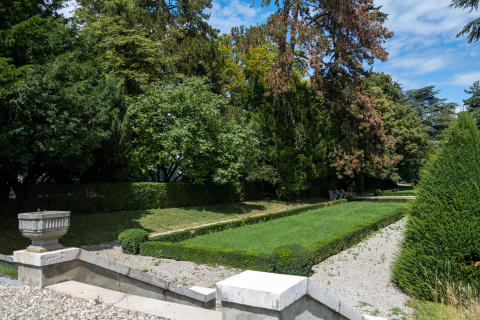
French Garden
The French garden has both aesthetic and symbolic ambitions. The gardens demonstrate what can be a triumph of order and culture over natural disorder.
French gardens are characterized by an open perspective, while maintaining an architectural style consisting of raised terraces, symmetrically arranged groves, manicured lawns and flowerbeds. Constructed in a unified layout, great thought was put into the materials and plants used, placement and style of sculptures and fountains.
French gardens were quite popular in the 16th century with the construction of the gardens of the Palais du Versailles and Vaur-le-Vicomte (France) by the famous landscape gardener André Le Notre.
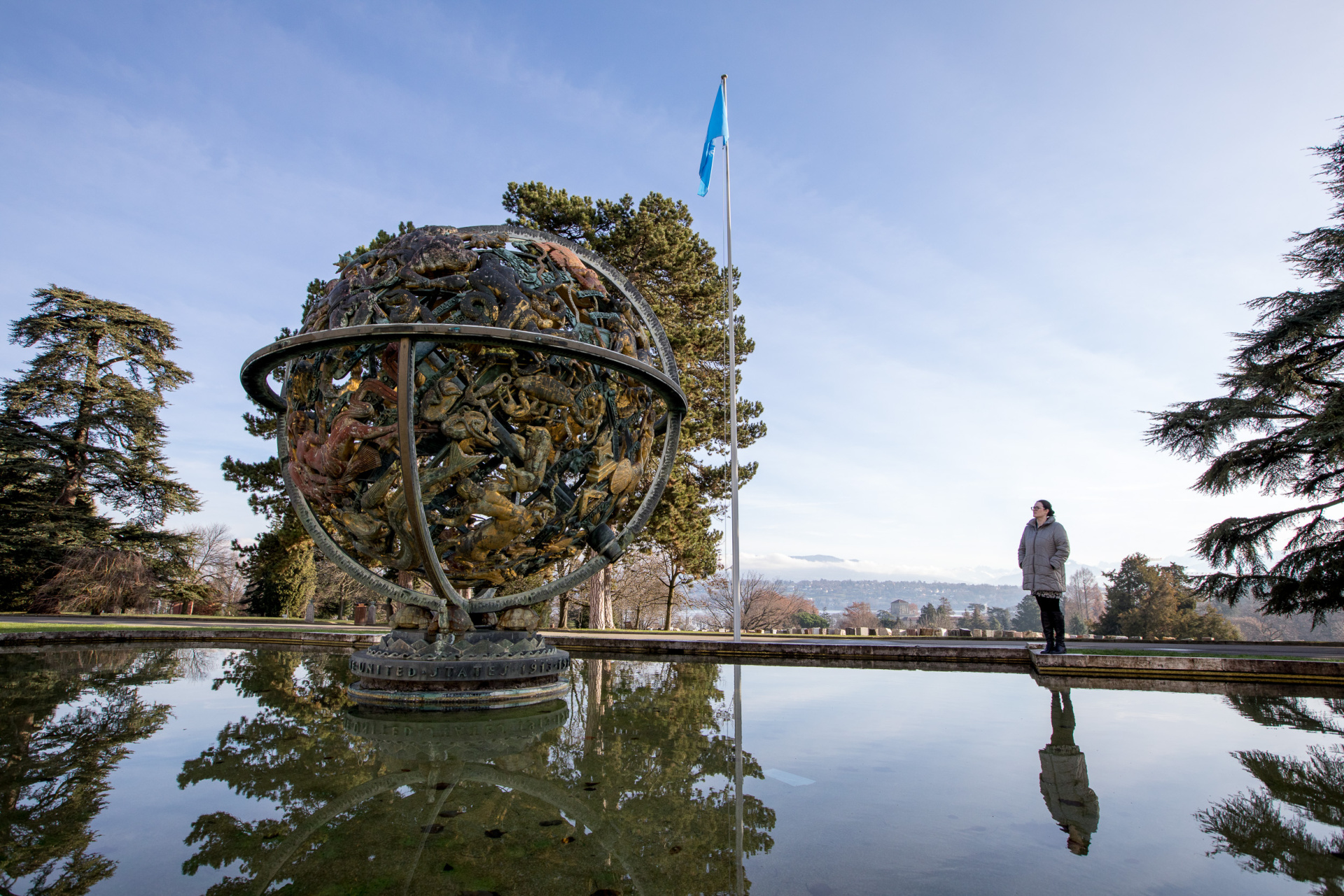
History
The “Celestial Sphere” is the large, metal sculpture located at the Palais des Nations on the Cour d’honneur easily viewed both from the UN Cafeteria and upstairs in the Assembly Hall from the Salle des pas perdus. The Celestial Sphere was installed in 1939 to commemorate the 20th anniversary of the founding of the League of Nations and to honour the leadership of American President Woodrow Wilson (1856-1924), who received the 1919 Nobel Peace Prize for his role in establishing the League. The sculpture’s full name is “Celestial Sphere – Woodrow Wilson Memorial.”
The Celestial Sphere is the masterwork of Paul H. Manship (1885-1966), an American sculptor associated with the Art Deco style. Manship made the work in the United States in plaster components that were then shipped to the Bruno Bearzi Fonderia in Florence, Italy, where the sculpture was cast and assembled.
The Palais des Nations was constructed beginning in 1929 and completed in 1938. Bruno Bearzi and two workmen came from Italy to install the Celestial Sphere. The task took about a week, beginning on 30 August 1939 and completed on 7 September 1939. Of course, during that week, on 1 September 1939, Germany invaded Poland, an event that even contemporaries recognized was the beginning of the Second World War. Bearzi and his colleagues completed their work before returning to Italy for the coming war.
Symbolism
The “Celestial Sphere,” as intended by the sculptor, has long been a symbol of international cooperation and the quest for world peace. Today it is one of the most readily recognized symbols of the United Nations and International Geneva.
The Celestial Sphere is in the ancient shape of an armillary sphere, long recognized in many cultures and traditions. It depicts the heavens as seen from Earth, with the constellations presented as cast bronze representations of figures from classical mythology. The Celestial Sphere was designed to rotate on an axis that is set on Polaris, the “North Star,” so that the movement of the stars as the sculpture rotates duplicates the movement of the stars in the sky as the Earth rotates.
The restoration of the Celestial Sphere as a historic work of art harmonizes with the mission of the United Nations and with the motivation underlying the 2030 Agenda for Sustainable Development: Working for peace, rights and well-being. The preamble of the UN Charter identifies as its first goal “to save succeeding generations from the scourge of war.” The 2030 Agenda for Sustainable Development is the practical plan to accomplish many tasks that will together contribute to the realization of a peaceful world.
Any serious work of art is open to many interpretations. In using a celestial theme for a Woodrow Wilson Memorial for the headquarters of the League of Nations, surely Manship was inviting all of us to cast our eyes to the stars and aspire for world peace. World peace cannot be simply achieved in 1919 with the creation of the League of Nations or in 1945 with the creation of the United Nations. It is something that humanity must work toward every day. The Celestial Sphere is a symbol to be embraced by all who work for the UN or for International Geneva and by all around the world who hope for the UN’s success. Perhaps as a symbol and a work of art it conveys ideas that are even beyond expression in words.
Restoration
The restoration of the “Celestial Sphere” is made possible by the generosity of a private donor. Rules established by the General Assembly preclude the UN from using its general funds to acquire art or to repair it. Funds have been raised for limited repairs over the years, this will be the first complete conservation program for the Celestial Sphere in its almost 80 years of existence.
The Celestial Sphere Restoration Project is complex. Engineering and art preservation evaluations have been completed. The project embraces not only the conservation of the sculpture itself, but also the restoration of the reflecting pool, installation of lighting and the redesign of the landscaping around the sculpture. Many people know that the Celestial Sphere rotated when it was first installed. The rotating mechanism was idled during the Second World War and never again worked well. It was disabled decades ago. The current project intends to restore the sculpture’s capacity to rotate.
The restoration will include the cleaning and re-gilding of the 64 cast bronze statuettes of mythical figures representing constellations that originally adorned the sculpture. The Celestial Sphere originally boasted 810 silver stars located on the sculpture with astronomical accuracy by the artist. Many of these stars have been lost over time, and all of them remaining are tarnished to black. Under the project, the missing stars will be replaced and the silver colour restored to all of them. The aesthetic goal of the project is to restore the Celestial Sphere to the way it looked when it was first installed. Once restored, the sculpture will sparkle and shine in a way not seen for many years.
In addition, the Cour d’honneur will be regraded, resulting in the terrain around the Celestial Sphere and its reflecting pool being elevated about one meter. This presentation of the Celestial Sphere draws from landscape ideas originally proposed by the artist in 1939.
The Celestial Sphere will be disassembled as part of the restoration project, and the sculpture will be absent from the Cour d’honneur for several months.
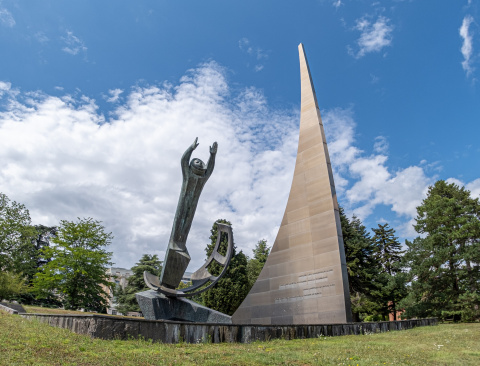
The Conquest of Space (1971)
by Barsh, Kolchin, Faidish and Youri Neroda. Gift from the Union of Soviet Socialist Republics.
The 85‐foot‐high monument designed by the architect Alexander Koltchin and sculptor Yuri Neroda, consists of an arching shaft, sheathed in titanium, beside the figure of an astronaut reaching toward the sky and hails man's ventures in space.
Officially donated by Yekaterina Furtseva, Soviet Minister of Culture, on July 20, 1971, the monument is located in the Ariana Park.
This sculpture is based on the Monument to Conquerors of Space, a 350 foot monument installed in Moscow on October 4, 1964, on the day of the 7th anniversary of the Sputnik 1 launch.
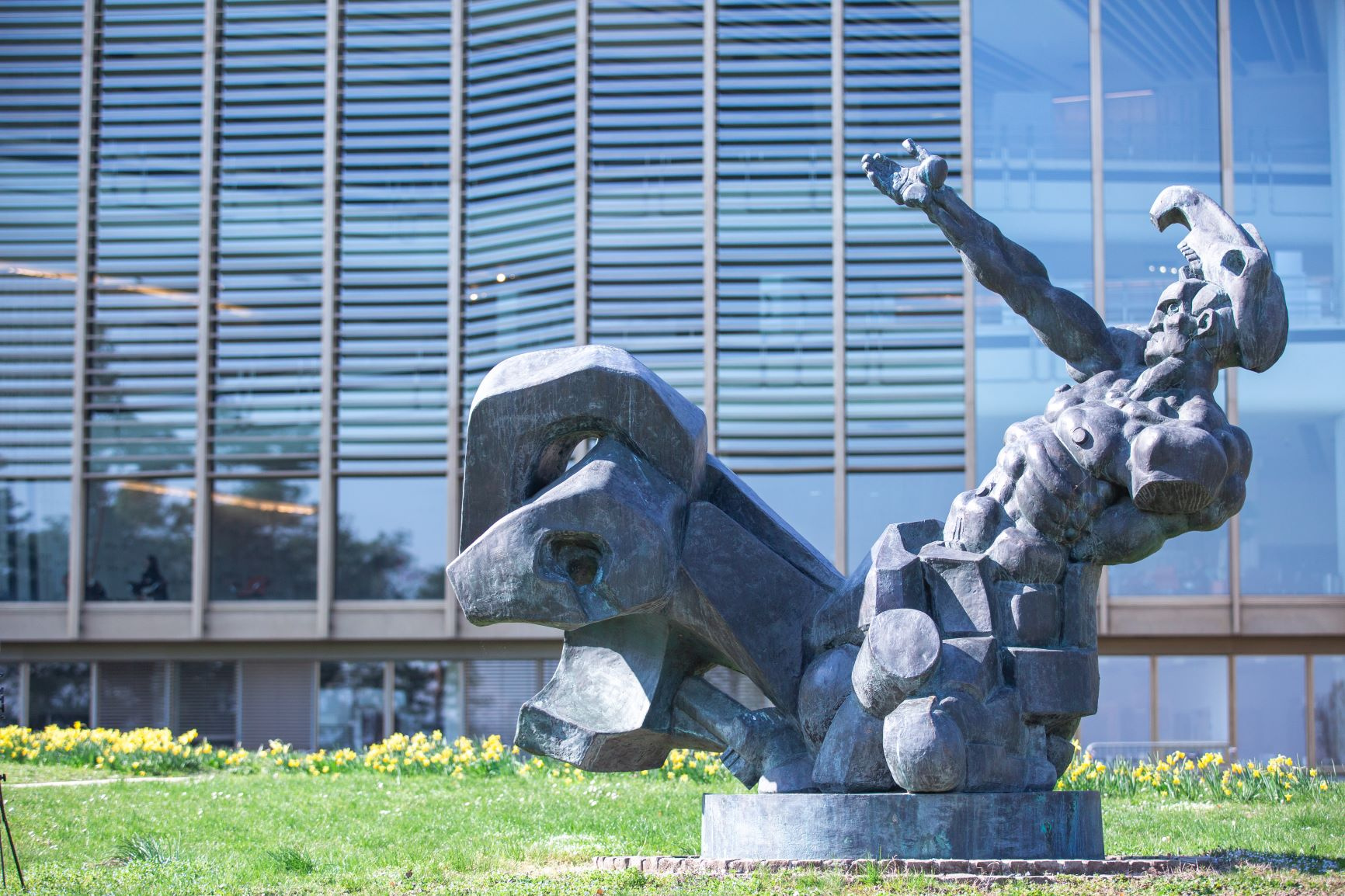
THE GREAT CENTAUR (1997)
by Ernst Neizvestny, Gift from the Russian Federation.
The sculpture of Ernst Neizvestny "The pointing Centaur " was created in 1989. This figure, on an enlarged scale and called "The Great Centaur", was presented to the UN headquarters in Geneva. The statue is installed behind the Serpent Bar in the Ariana Park.
Geneva is considered to be a special city for Ernst Neizvestny, as it was his first permanent home in exile. The sculptor kept a sense of gratitude to the city and the sculpture was his way to pay tribute for the warm welcome.
"The Great Centaur" depicts a man emerging from a shapeless mass that resembles both the body of a horse and abstract structures. The image of a man breathes with the thirst for freedom, irrepressible energy. The raised hand and the purposeful look express desire to move forward and upwards, to a high goal. Neizvestny demonstrated his ability to connect the unconnected: living and inanimate nature, life and death, good and evil. This synthesis of heterogeneous elements is represented by the deformation of individual parts of the human body, their replacement with animal or man-made parts.
FAMILY (1979)
by Edwina Sandys
Family, dedicated to childhood and parenting, is one of three of Sandys sculptures to be installed at UN offices including New York, Geneva and Vienna. Family was created in commemoration of the UN International Year of the Child 1979, and was gifted to the UN by Harry and Bridget Oppenheimer.
Though not widely known, Edwina Sandys is the Granddaughter of the late Prime Minister of Great Britain Winston Churchill.
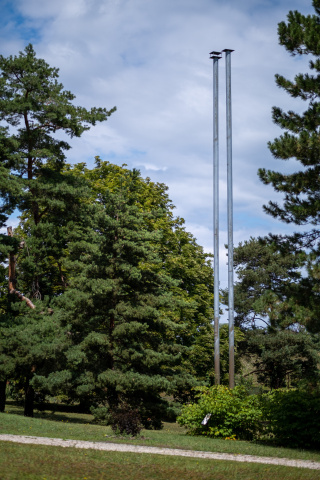
THE DISPERSAL OF SEEDS, THE COLLECTION OF ASHES
by Esther Shalev-Gerz and Jochen Gerz (1995)
Marking the 50th Anniversary of the United Nations in 1995, the German Government commissioned Esther Shalev-Gerz and Jochen Gerz to create a sculpture for the United Nation Park in Geneva. Shalev-Gerz proposed The Dispersal of Seeds, The Collection of Ashes, which consists of two masts – reminiscent of the poles from which emblematic flags are flown. The tall sculpture was installed standing high above some of the nearby trees in the Ariana park.
Circumnavigating the apex of one column is a singular platform and a double platform on the other – one representing the role of distribution to new beginnings and the other the necessity to assemble histories. Like trees stationery amidst a landscape in permanent flux The Dispersal of Seeds, The Collection of Ashes acknowledges the United Nation’s founding as an agency responsible for the advocacy and monitoring of international justice and dignity. At the same time the sculpture suggests the prerequisite for continuous remembrance of acts perpetrated and suffered by nations in the same century in which the United Nations was established. In 1996 a counterpart sculpture was installed in Marl, Germany.
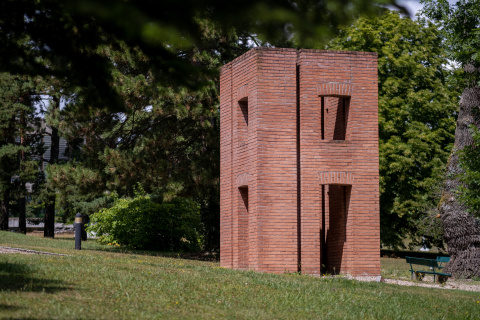
The Tower of Loneliness (1995)
by Per Kirkeby (Denmark). Gift from the artist.
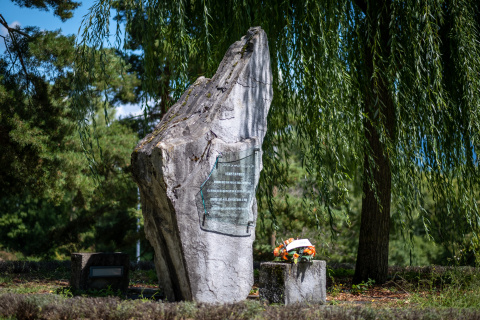
Memorial (2003)
The sign reads, "Remember here those who gave their lives for peace".
A ceremony for the unveiling of a memorial in honour of United Nations staff who have died in the service of peace took place on 24 October, 2003 at the Palais des Nations as part of the commemoration of United Nations Day.
The memorial is dedicated to the memory of all colleagues who have died working for the Organization and is a tribute to their achievements and sacrifice in the service of the human family. It is a unique and collective tribute made possible through the contributions of the United Nations Secretary-General, United Nations programmes and funds, specialized agencies, as well as staff associations and individual staff members in a spirit of solidarity and respect.
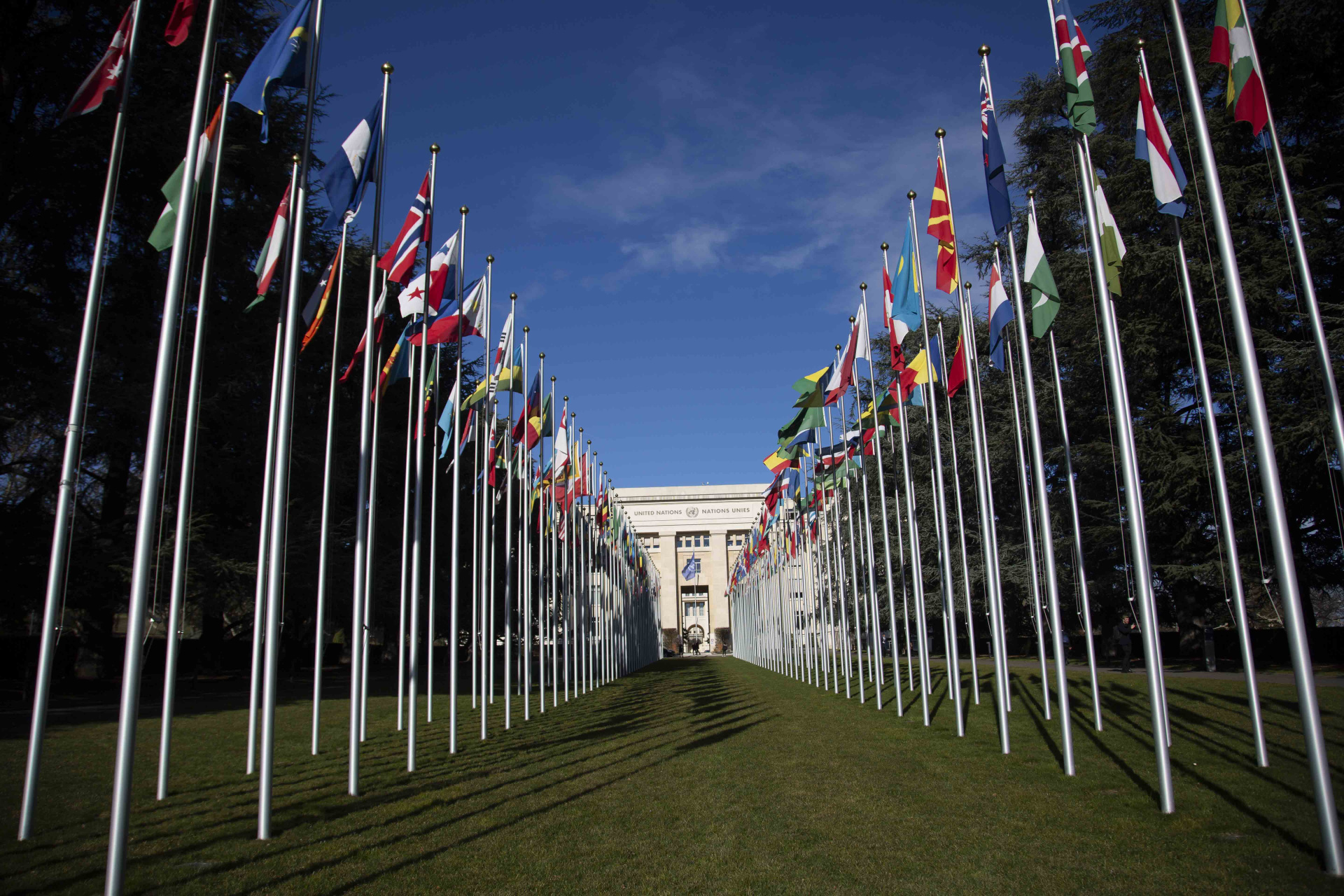
Each day thousands of tourists in Geneva gather at the Place des Nations near the Nations Gate and point their cameras towards the majestic rows of 193 Member State + 2 Observer State flags stretching towards the Palais des Nations. At the end of the Allée des Drapeaux, under the emblem of the United Nations, is the office that serves as the backdrop for this iconic photo. In that building sits a team of hard-working staff. The United Nations has one of the most diverse workforces in the world. Over 3,000 UN Secretariat staff in Geneva, from a wide range of professional backgrounds and with 171 nationalities, provide essential support to the international community every day.
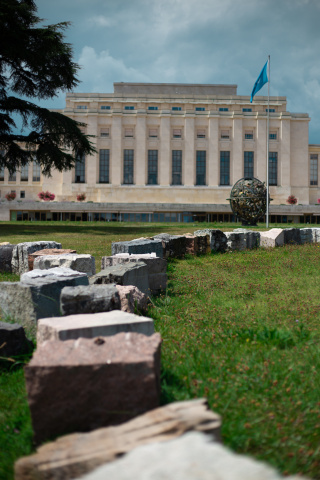
Rebirth (2015)
by Michelangelo Pistoletto and donated by Cittadellarte – Fondazione Pistoletto through the Republic of Italy.
The sculpture is made of 193 different stones. It is 42 meters long and 20 meters wide. Each stone bears the name of a UN Member State engraved in it. It weighs approximately 350 kg, measures about 45 cm by 45 cm and has an irregular shape. The symbol, developed by Italian artist Michelangelo Pistoletto, comes from a reconfiguration of the mathematical infinity sign and represents the 'rebirth' of society - a new world, where the 'human community' is united, dialogue between opposites is fostered, and balance and harmony is achieved.
The Rebirth symbol embodies the purpose and mission of the UN: finding balance between diverging ideas, creating harmony through dialogue, respecting and leveraging diversity, providing inspiration, and promoting inclusive and sustainable development. The symbol is made of three circles: the two opposite circles represent the world of nature and the world of technology; the middle circle is the conjunction of the two and represents the “generative womb of a new world”, the 'third paradise', or the 'rebirth'. In this new world technology and nature meet in harmony and humans work together to bridge differences, find sustainable development, create dialogue and promote peace.
The sculpture was presented on 24 October, 2015, on the occasion of the 70th anniversary of the UN celebrated during the Open Day organized by UNOG at the Palais des Nations.
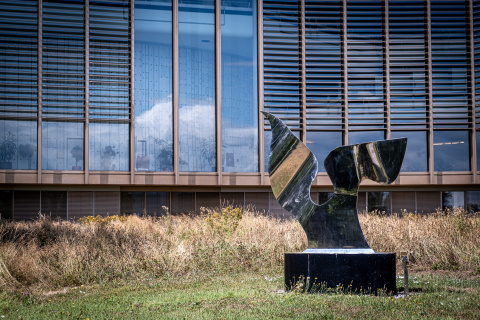
ANGEL OF PEACE (2015)
by Pepo Toledo in Palais de Nations, UN, Geneva
Pepo Toledo inaugurated his sculpture Angel of Peace at the Palais de Nations on November 9, 2015. The ceremony was held on the occasion of the 20th anniversary of the Peace Accords in Guatemala and in coordination with Peace Week in Geneva.
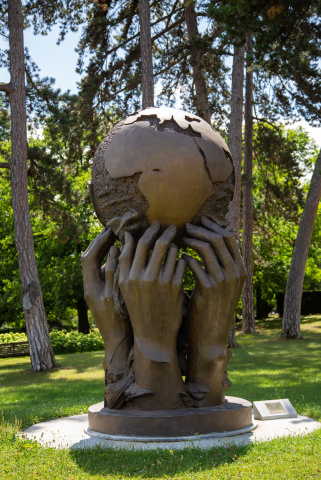
THOUGHTS AND DESIRES (2017)
by Ali Ibadullayev and Salhab Mammadov
This sculputre was Donated byt the Rpublic of Azerbaijan to celebrate the 25th anniversary of its membership in the United Nations on 3 October, 2017.
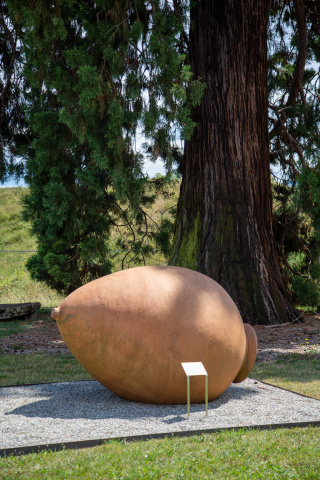
Qvevri (2016)
A gift from Georgia to mark the organisation’s 70th anniversary, the vessel will permanently remain in the UN office courtyard with an accompanying signboard giving viewers information about its history and purpose.
A qvevri is a large clay amphora-like vessel that’s traditionally buried in the ground up to its neck, in which wine is fermented and stored in regions of Georgia but especially in Kakheti, east Georgia.
Qvevri wine-making is an ancient Georgian tradition that has been passed down the generations that even today remains widespread around the country.
In 2013 Georgia’s unique traditional method of fermenting wine in qvevri was registered on the Intangible Cultural Heritage list of the UN educational, scientific and cultural organisation (UNESCO).
The qvevri, placed at the Geneva office, was made in one of Georgia’s most famous pottery-making villages, Makatubani.
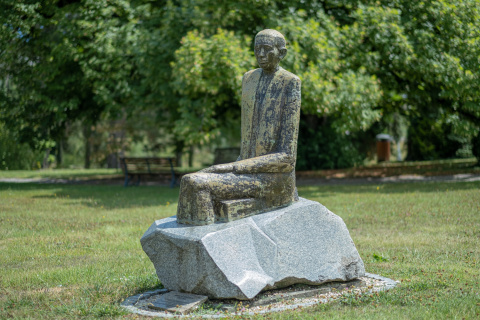
Sculpture of NICOLAE TITULESCU (1882-1941)
Minister of Foreign Affairs of Romania (1927-1928; 1932-1936)
President of the League of Nations Assembly (1930;1931)
President of the International Diplomatic Academy of Paris (1934)

